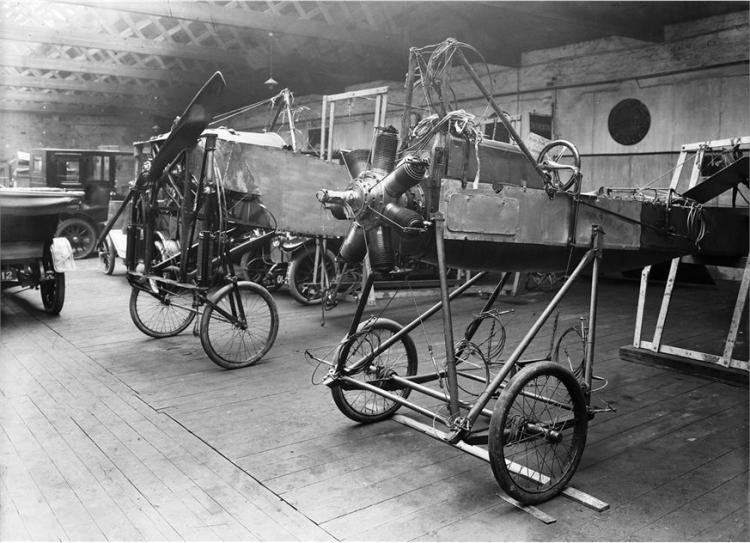
Harry Ferguson
Explore the life and worldwide impact of Innovator Harry Ferguson.
Innovator
Henry "Harry" Ferguson was a Northern Irish mechanic and inventor best known for developing the three-point linkage system for the modern tractor, which revolutionised agriculture globally, as well as being the first person in Ireland to build and fly his own aeroplane.

In 1902, Harry began working with his elder brother, Joe, in his bicycle and car repair shop. The brothers had a reputation for accuracy and quality and used the latest equipment. It was while working as a mechanic that Harry developed an interest in aviation, visiting air shows in his spare time in the UK and Europe.
Captivated by the newly emerging human flight technology and influenced by key players in the industry, particularly the Wright brothers, the American aviation experts who made their first flight in 1903, Harry persuaded his brother that they should attempt to build a plane in their Belfast workshop. He set to work using his own research and notes from air shows that he attended. By December 1909, Harry had built his first aircraft, the Ferguson monoplane. After a few failed attempts, Harry flew the monoplane 160 yards on 31 December, making him the first Irishman to build and fly his own aeroplane.

Following a disagreement with his brother about future of aviation and the time he was dedicating to it, Harry and his brother went their separate ways. Harry founded his own company, The May Street Motor Company, later named Harry Ferguson Ltd., selling Star, Maxwell and Vauxhall cars and Overtime Tractors.
Innovation
As a tractor salesman, Harry knew first-hand the problems associated with tractors having separate plough units. In 1917, he developed a plough that could be attached to a Model T Ford car. A year later, Harry met with Henry Ford, owner of the Ford Motor Company, to persuade him to produce the plough, but Ford declined.

In the following years, Ferguson and his team continued to develop the invention, creating a hydraulic draft control system which was designed for a Fordson F tractor. Unfortunately, this was also the year that Ford ended production of the tractor. Harry set about designing his own tractor that would accommodate his new invention, a prototype dubbed the ‘Ferguson Black’ tractor.

In October 1938, Ferguson made the famous "handshake agreement" with Ford, the beginning of a fruitful partnership which saw Ford manufacture tractors using Ferguson’s patents, including the Ford-Ferguson 9N and the Ford-Ferguson 2N. Their agreement was terminated in 1947 by Henry Ford II, Ford's grandson, following unsuccessful negotiations. Ferguson was left without a tractor to sell in North America and sued the Ford Motor Company in 1948. After a legal battle which lasted 4 years, Ferguson accepted an out-of-case settlement of $9.25 million in 1952 and Ford agreed to stop using his patents.

Ferguson became involved with Massey Harris, a large agricultural equipment producer in the Canada. Massey Harris Ferguson was established in 1953, later renamed Massey Ferguson, as a multi-national manufacturer of agricultural machinery.
Impact
Ferguson resigned as Chair of Massey Ferguson in 1954 and spent his remaining years devoted to the development of car design. He was the first to develop a 4WD system which he employed in his racing car, the P99. This was very successful on the Formula 1 circuit, notably when driven by Stirling Moss when he won the Formula 1 Oulton Park Gold Cup in 1961.
Harry Ferguson died on 25 October 1960 but his inventions and influence live on, with his hydraulic draft control system having changed the face of agriculture on a global scale.









